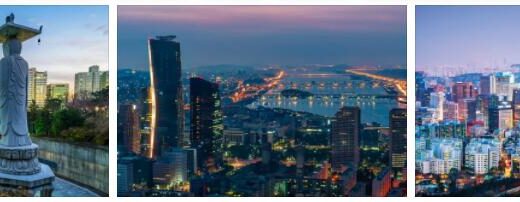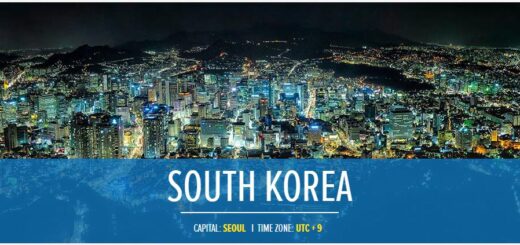History of South Korea
Korea is one of the oldest states in East Asia. The earliest state formation in the history of Korea is the Ancient Joseon, which flourished in the 5th-6th centuries. BC. In Korean, “Joseon” means “Land of Morning Calm” or “Land of Morning Calm”.
In the 1st century BC. on the Korean peninsula, the early feudal states of Koguryeo, Baekche and Silla are formed. This historical period of time is called the “period of the three kingdoms.”
Three states were at the stage of early feudal development. They established Confucianism and Buddhism.
Goguryeo, Baekje and Silla fought a long internecine struggle for leadership. The Chinese empires Sui and Tang intervened in the bloody conflicts between the Korean states.
In the 7th century Silla won the wars against Goguryeo and Baekje. A united Silla was created – the first unified state in the history of Korea. In the 8th c. the united Silla turned into a strong centralized feudal state. At the beginning of the 9th c. Silla is in decline as a result of feudal civil strife.
In 918, the commander Wang Gon unites the lands of the Korean Peninsula and forms the state of Koryo (hence the European name Korea). The entire period of Koryo’s existence (10th century – late 14th century) was marked by constant wars with the Khitans and Jurchens, and a courageous struggle against the Mongol invasions.
At the end of the 11th c. the state of Koryo began to noticeably weaken. The country was ravaged not only by the Khitans, Jurchens, Mongols, but also by the strife of feudal cliques. The weakening of the state was accompanied by an increase in feudal exploitation, which led to popular uprisings. In con. 12th c. In Korea, there were three major uprisings of peasants, covering a significant part of the territory of Korea.
In 1392, the commander Lee Song-gye carried out a coup d’état and proclaimed a new dynasty, the Lee dynasty, which ruled Korea until 1910. The founder of the dynasty, Lee Song-gye, gave a new name to the state he created – Joseon in memory of Ancient Joseon.
The new wang (king) and his followers carried out a series of reforms aimed at reviving Korea and strengthening the centralized state.
In the 15th-17th centuries. Korea put up stubborn resistance to foreign invaders. In 1592–98, Korea repulsed the Japanese invasion with the help of China. In a long destructive war (the Imjin War went down in history) against Japan, the Korean people showed courage and heroism. The Korean navy, using the iron-clad Kobukson (Turtle) ship, scored several victories over the Japanese navy. The outstanding military leader Admiral Yi Sun-sin led the Korean navy.
In the beginning. 17th century the Korean people also repulsed the invasions of the Manchu tribes.
Fearing new invasions by foreigners, the ruling aristocracy of Korea in the 17th century. began to pursue a policy of isolation from the outside world. Korea became known as the “hermit country”. Protective outposts were built along the Korean coast, the population was forbidden to communicate with foreigners. Even fishermen were not allowed to go far out to sea, so as not to have contact with sailors of foreign ships. However, in con. 18th century European missionaries began to penetrate into China, bringing with them the ideas of Christianity. The Christian religion gradually established itself in Korean society.
The internal life of Korea in the 17th-18th centuries. marked by conflicts, internecine strife, conspiracies and coups, the struggle of various “parties”. Nevertheless, this period in the history of Korea is also characterized by the development of crafts and trade, the emergence of workshops. Mining began to develop, the extraction of gold, silver, and copper was established. Gradually formed commodity-money relations.
An outstanding page in the history of Korean culture in the 18th century. there was an ideological trend “sirhak” (“real sciences”), which arose as a counterbalance to orthodox Confucianism. The Sirhakists were against the cruel exploitation of the peasantry, for the introduction of egalitarian land tenure, the development of national industry and trade. They called to adopt all the best that other nations have, protested against social inequality and superstition. Supporters of this current demanded an end to the policy of “sadezhuy” (“kowtow” to the “elder brother”, which was China). The views of the Sirhak ideologists reflected the growing democratic tendencies in Korean society, the beginning of the crisis of the feudal system. Check equzhou for political system of South Korea.
Beginning 19th century marked by the instability of the Korean state, the growth of peasants and artisans against the dominance of the feudal lords and the aristocracy. During this period, a new teaching “tonghak” (“Eastern teaching”) appeared, which absorbed the ideas of Buddhism, Confucianism, Christianity and Korean shamanism. The main idea of “tonghak” is that all people are equal.
In the 19th century Korea becomes the object of expansion of countries that tried to “open” Korea by force. In 1876, Japan was the first to impose an unequal treaty on Korea. Then other states – the USA (1882), Great Britain (1883), Russia (1884), France (1886) – concluded similar treaties with it. A struggle for dominance in Korea developed between the major powers.
In the 1870s-90s. in the conditions of the crisis of feudal relations and external influence in Korea, the “kehwa undong” (“movement for reforms”) movement was born, the ideological basis of which was the “movement for real sciences” (“sirhak”). Supporters of “kehwa undong” opposed feudalism, for the development of capitalist relations, against Chinese influence in the country, for expanding ties with foreign countries. Their program included the suppression of corruption, the reorganization of the Armed Forces, the improvement of the situation of the people, the assimilation of the best practices of other countries.
On December 4, 1884, the reformers carried out a coup d’état, but two days later, with the help of Chinese troops under the command of Yuan Shikai, the reform movement was suppressed.
In con. 19th century in Korea, a broad peasant movement against feudal oppression unfolded. This movement resulted in the peasant war of 1893–94, which, at the insistence of the ruling circles of Korea, was suppressed by Chinese troops. China’s military action caused resentment from Japan, which sent troops to Korea under the pretext of protecting its subjects and defeated the Chinese forces. As a result of China’s defeat in 1895, Korea freed itself from Chinese vassalage and became an independent state. Check homeagerly for democracy and human rights of South Korea.
In 1896, the Korean royal court staked on Russia in the hope of preventing the enslavement of Korea by Japan. Russia stands for preserving the independence of Korea. After the defeat in the war with Japan in 1905, Russia was unable to resist Japanese influence in Korea. In November 1905, Japan imposed a defense treaty on Korea, which meant the establishment of a Japanese protectorate over it. In August 1910, Japan completely annexed Korea, turning it into a governor-general, part of the Japanese empire.
For almost 40 years, Japanese colonial rule in Korea continued, bringing innumerable disasters and suffering to the Korean people. Over the years, Korea has gone through three stages of Japanese rule: the first is the “saber regime”, the second is “cultural management”, or “velvet cat’s paw”, and the third is “integration”, i.e. attempts to involve Koreans in lower-level power structures.
An important stage in the history of the national liberation movement in Korea was the March 1 uprising of 1919, in which up to 2 million Koreans took part. The March Day movement was crushed by the Japanese colonialists.
During World War II Korea was turned by Japan into a military-strategic foothold. Hundreds of factories for the production of weapons and military equipment for the Japanese army were built in Korea. A number of industries in Korea (metallurgical, chemical), railway transport served the Japanese empire. Japan exported significant amounts of rice produced in Korea for its own needs.
The brutal suppression of freedoms, national oppression and lack of rights pushed the Korean people to fight against colonial enslavement. A guerrilla movement unfolded on the territory of Korea. One of the guerrilla units was led by Kim Il Sung, the future leader of North Korea. The Provisional Government of Korea operated in Shanghai. More than 5 thousand Koreans fought in the ranks of the armies of the anti-Hitler coalition.
The defeat of the Japanese Kwantung grouping by the Soviet Army in August 1945 brought liberation to the Korean people. However, the confrontation that began between the USSR and the USA did not allow the creation of a single Korean state. In May 1948, on the initiative of the United States, parliamentary elections were held in South Korea (the US area of responsibility). On August 15, 1948, the Republic of Korea is proclaimed. Lee Syngman becomes the President of the Republic of Kazakhstan.
In August 1948, elections to the Supreme People’s Assembly were also held in the North of Korea. September 9, the establishment of the Democratic People’s Republic of Korea is proclaimed. Kim Il Sung is appointed Chairman of the Cabinet of Ministers. He is also the General Secretary of the Central Committee of the Workers’ Party of Korea.
After the formation of two Korean states, the confrontation on the peninsula intensifies. In 1950, the Korean conflict broke out, the responsibility for unleashing which lies both with the leaders of the North Korea and the ROK, Kim Il Sung and Lee Syngman, and with the allied states of the North and South (the USSR and the USA).
The armed forces of the PRC (on the side of North Korea), as well as the United States and its allies (on the side of South Korea) took part in the Korean War. The USSR provided material assistance to the North Korea in the war. The UN Security Council resolution of June 25, 1950 recognized the North Korea as an aggressor. The Korean War, which lasted 3 years, ended with the signing of an armistice agreement in July 1953, which is still in effect.



